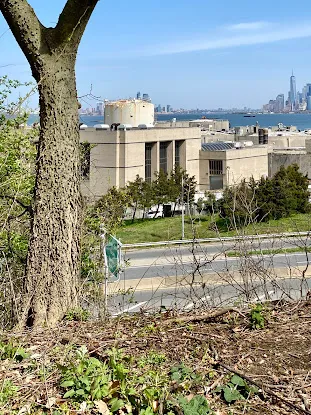
Owls Head Wastewater Treatment Plant
Business Information
Category: Sewage treatment plant
Address: 6700 Shore Rd Brooklyn, NY 11220 United States
District: Downtown Manhattan
Phone: +1 718-748-3177
Working Hours: Closes at 07:00
Website: http://nyc.gov/dep
Rating:
Location
About
Owls Head Wastewater Treatment Plant: A Vital Component of New York City's Infrastructure
The Owls Head Wastewater Treatment Plant (WWTP) is a crucial facility located in Brooklyn, New York, that plays an essential role in managing the city's wastewater. As part of the New York City Department of Environmental Protection (DEP), this plant is responsible for treating sewage and stormwater runoff from a significant portion of the borough, ensuring that it meets environmental standards before being released into local waterways.
Overview and Capacity
Opened in 1998, the Owls Head WWTP is designed to handle an average daily flow of approximately 100 million gallons of wastewater. This capacity allows it to effectively manage the needs of the surrounding communities while also accommodating peak flows during heavy rainfall events. The plant employs advanced treatment technologies, including primary and secondary treatment processes, which help to remove pollutants and pathogens from the water.
Treatment Process
The treatment process at Owls Head begins with screening, where large debris such as sticks and plastics are removed from incoming wastewater. Following this initial step, the water undergoes primary treatment, which involves sedimentation tanks where solids settle out. The remaining liquid then moves on to secondary treatment, where biological processes further break down organic matter using microorganisms. This stage is critical for reducing biochemical oxygen demand (BOD) levels, which is a key indicator of water quality.
After undergoing these treatments, the effluent is disinfected—typically using ultraviolet light—to eliminate any remaining pathogens before it is discharged into Jamaica Bay. This multi-step process not only protects public health but also helps preserve aquatic ecosystems by minimizing pollution.
Environmental Impact and Community Engagement
The Owls Head WWTP operates under strict regulatory guidelines set forth by both state and federal agencies to ensure compliance with environmental laws. The facility's operations are designed to minimize odors and noise pollution, contributing positively to the local community's quality of life. Additionally, the plant engages with residents through educational programs aimed at raising awareness about water conservation and pollution prevention.
In recent years, there has been a growing emphasis on sustainability within wastewater management practices at Owls Head. The facility has implemented various initiatives aimed at reducing energy consumption and enhancing resource recovery. For instance, efforts are underway to capture biogas produced during treatment processes for use as renewable energy.
Future Developments
Looking ahead, the Owls Head WWTP is poised for further enhancements as part of New York City's broader strategy to improve its infrastructure in response to climate change challenges. Upgrades may include increased capacity for stormwater management systems and investments in green infrastructure projects that promote natural filtration methods.
In conclusion, the Owls Head Wastewater Treatment Plant stands as a vital asset in New York City's environmental management framework, ensuring that wastewater is treated efficiently while safeguarding public health and protecting local ecosystems. Its commitment to innovation and sustainability reflects a forward-thinking approach essential for addressing contemporary urban challenges.
AUTHORITATIVE SOURCES
Information about wastewater treatment processes can be found on EPA's website.↩
Details regarding NYC DEP operations are available on NYC DEP's official site.↩
Social Media
Business Districts and Categories
Customer Reviews
Please sign in with Google to leave a review.
0 Reviews
There are no reviews for this business yet. Be the first to leave a review!
Technical Information
Machine ID: /g/11h08t_3l
Feature ID: 0x89c24ffe38b4d7b7:0xa994297da30c8632
Created Date: 09 January 2025, 03:57
View Count: 49 views
Maps: View on Google Maps